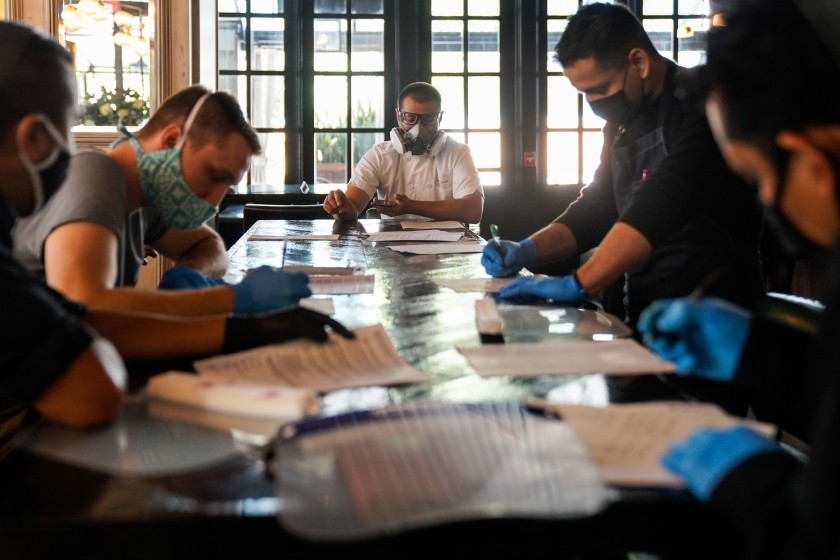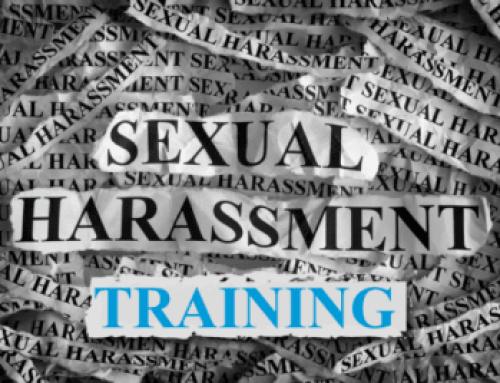Overview: Cal/OSHA recently adopted an emergency standard for COVID-19 prevention in the workplace, effective November 30, 2020. Significant new requirements have been imposed on California employers, including the requirement to continue paying employees excluded from work for having been exposed to COVID-19. The emergency regulation will be in effect for 180 days, which may be extended, and Cal/OSHA will likely move forward with additional rulemaking on this topic during such timeframe. The new emergency standard generally applies to all employees and places of work, but does not apply to the following: (i) places of work with one employee who does not have contact with other persons, (ii) employees working from home, or (iii) employees already covered by Cal/OSHA’s aerosol transmission standard (primarily applicable to certain health care facilities and laboratories).
Written Prevention Program: To comply with the new rules, an employer must develop a written COVID-19 Prevention Program or ensure its elements are included in the employer’s existing Injury and Illness Prevention Program. Cal/OSHA has posted a Model COVID-19 Prevention Plan on its website for employers to use. The employer must implement the following, which must be part of their written plan:
- Communicate to employees the employer’s COVID-19 prevention procedures.
- Identify, evaluate, and correct COVID-19 hazards.
- Ensure physical distancing of at least six feet (unless it is impossible).
- Implement effective policies and procedures to correct unsafe and unhealthy conditions (such as safe physical distancing, modifying the workplace, and staggering work schedules).
- Provide workers with (and ensure they use) face coverings to prevent exposure in the workplace. The new rules are silent regarding whether employees can bring their own face coverings to use at the workplace, so employers should invest in quality face coverings for all of their employees.
- Use engineering controls, administrative controls, and personal protective equipment to reduce transmission risk.
- Implement appropriate procedures to investigate and respond to COVID-19 cases in the workplace.
- Provide COVID-19 training to employees, including effective training and instruction to employees on how COVID-19 is spread, infection prevention techniques, and information regarding COVID-19-related benefits that affected employees may be entitled to under applicable federal, state, and/or local laws.
- Provide testing to employees who are exposed (or who were potentially exposed) to COVID-19, and in the case of multiple infections or a major outbreak, implement regular workplace testing for employees in the exposed work areas. Note that COVID-19 testing must be at no cost to the employees, should be during their working hours, and the employees cannot be unpaid during testing time.
- Ensure the exclusion of COVID-19 cases and exposed employees from the workplace until they are no longer an infection risk.
- Maintain adequate records of COVID-19 cases and report serious illnesses and multiple cases to Cal/OSHA and the local health department, as required. When there are multiple COVID-19 infections and COVID-19 outbreaks, employers must follow the requirements for testing and notifying public health departments of workplace outbreaks (3 or more cases within a 14-day period) and major outbreaks (20 or more cases within a 30-day period). Note that employers must contact the local health department within 48 hours after learning of 3 or more COVID-19 cases to obtain guidance on preventing the further spread of the virus within the workplace. Also, when a serious COVID-19 illness (e.g., a COVID-19 illness requiring inpatient hospitalization) or death occurs, the employer must report this immediately to the nearest Cal/OSHA enforcement district office.
Recordkeeping Requirements: Employers must identify, track, and maintain a record of all COVID-19 cases in the workplace, while ensuring medical information remains confidential. These records must be made available to employees, authorized employee representatives, or as otherwise required by law, with personal identifying information removed.
Communication with Employees: Employers must communicate the following to all employees:
- How to report COVID-19 symptoms, exposures, and hazards to the employer without fear of reprisal.
- All COVID-19 hazards in the workplace and the employer’s policies and procedures to address them.
- The procedures that an employer has for accommodating employees with elevated risk factors for COVID-19, such as heart disease, diabetes, various lung diseases and others. Note that this is an obligation to communicate about existing procedures, not to create new ones, but reassigning employees with elevated COVID-19 risk factors to jobs with less exposure risk is encouraged and may be required under federal and state disability laws.
- How employees can obtain testing for COVID-19, such as through the employer’s workplace-based testing program, or through the local health department, a health plan, or at a community testing center.
- Notice of potential exposure to COVID-19, which must be provided within one business day to all employees who may have been exposed. Savvy employers will have template notices at the ready to avoid delays.
- Cleaning and disinfection protocols at the workplace.
- How to participate in workplace hazard identification and evaluation.
Identifying, Evaluating, and Correcting COVID-19 Hazards: Employers must:
- Develop and implement a process for screening employees for, and responding to employees with, COVID-19 symptoms.
- Review state and local guidance and orders on hazard prevention, including industry-specific guidance found on Cal/OSHA’s website, and create their written COVID-19 Prevention Program accordingly.
- Review existing practices for controlling COVID-19.
- Conduct a site-specific evaluation of where COVID-19 transmission could occur at each workplace under the employer’s control or purview, including interactions between employees and any other persons, and places employees may congregate or interact with members of the public.
- Allow employees (or their authorized representatives) to participate in hazard identification and evaluation. Note that the employer has flexibility in how it allows this to occur and, although the rule does not explicitly require employee participation, employers must allow it and Cal/OSHA encourages employee participation in hazard identification and evaluation.
- Ensuring an appropriate and responsive process is in place to immediately address COVID-19 cases.
- Conduct periodic inspections of the workplace to ensure compliance with the employer’s written COVID-19 Prevention Program and to check for new hazards.
- Implement procedures to correct identified hazards related to the spread, or potential spread, of COVID-19.
Conclusion: Cal/OSHA’s new emergency regulations require employers to take numerous actions to protect their workers from hazards related to COVID-19. The requirements are robust and employers must have a comprehensive and compliant plan in place, along with the policies, procedures, and infrastructure to ensure compliance with such plan. The items listed above do not constitute the entire range of legal requirements. Starting January 1, 2021, Cal/OSHA can shut down an entire worksite that exposes workers to an imminent COVID-19 hazard, so there is no time to delay and the consequences of non-compliance can be severe. Cal/OSHA has posted extensive FAQs regarding the new regulations, which can be found here. Employers should consult with experienced legal counsel to determine which rules apply to them and help create a compliant written COVID-19 Prevention Program.







